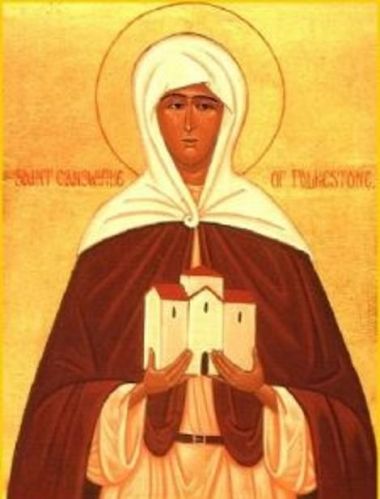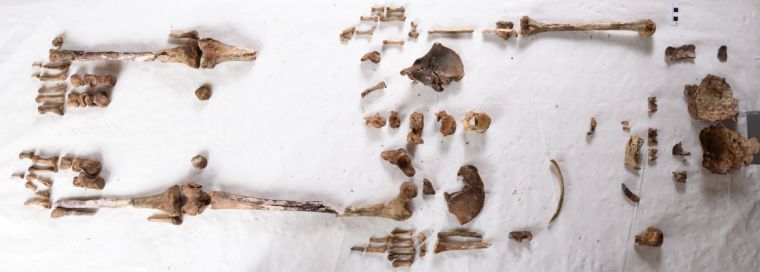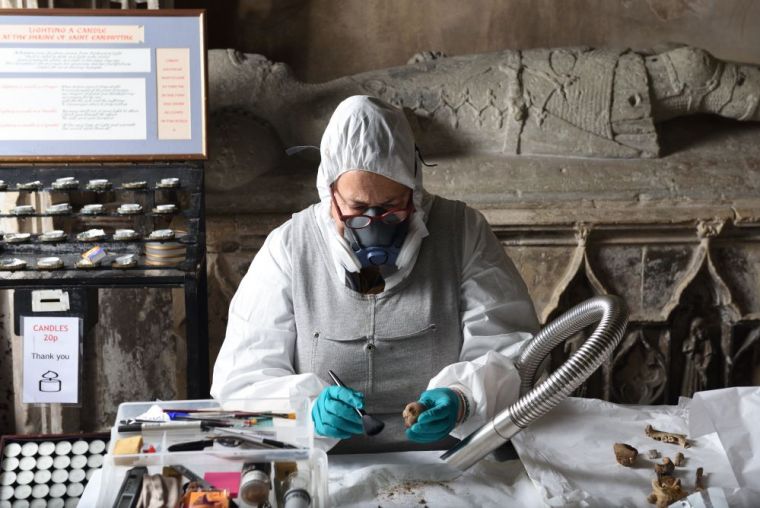Remains of England's earliest saint discovered

Experts have confirmed that human remains kept in a church in Kent are those of England's oldest saint, St Eanswythe.
Local archaeological and history experts, working in partnership with researchers from Queen's University, Belfast, said the bones at St Mary & St Eanswythe Church are almost certainly those of the saint.
Eanswythe was an Anglo-Saxon and member of the Kentish royal family, being the granddaughter of Ethelbert, the first English king to convert to Christianity following the arrival of Augustine.
She is the patron saint of Folkestone and is believed to have founded one of the earliest monastic communities in England in AD 660 , situated on the Bayle - the town's historic centre.
Researchers believe she was in her late teens or early 20s when she died, although at present the cause of her death is still unknown.
The remains were hidden in the north wall of the Church of St Mary & St Eanswythe, sparing them the destruction of the Reformation, and were rediscovered in 1885.
The identification of the remains as St Eanswythe are based on a tooth and bone sample that produced calibrated age ranges "that are in good agreement", said Stephen Hoper, of Queens University's Radiocarbon Dating Facility.
"The results would indicate that there is a high probability of a mid-seventh century date for the death of this individual," he said.
The discovery makes St Eanswythe the only verified member of the Kentish royal dynasty.
Dr Andrew Richardson, of the Canterbury Archaeological Trust, said it was a "stunning" discovery "of national importance".
"It now looks highly probable that we have the only surviving remains of a member of the Kentish royal house, and of one of the earliest Anglo-Saxon saints," he said.

"There is more work to be done to realise the full potential of this discovery. But certainly the project represents a wonderful conjunction not only of archaeology and history, but also of a continuous living faith tradition at Folkestone from the mid-seventh century down to the present day."
The Rev Dr Lesley Hardy, Director of the Finding Eanswythe project said: "As you walk through the streets of Folkestone, you are walking, layer upon layer, over ancient history that is now largely hidden from view. Finding Eanswythe was about bringing that forgotten history back to the surface."


Reflecting on the spiritual significance of this find, the Rev Dr John Walker Priest-in-Charge of St Mary & St Eanswythe Church said: "St Eanswythe's life vibrates with prayerfulness, compassion and openness to the needs and contribution of others. Her presence with us calls us to embody these qualities too."
Funds are being raised to start the next phase of research which will include DNA and stable isotope analysis of the remains.
Part of the funds will go towards ensuring that her remains are properly housed for the future and displayed for the purposes of research and tourism.
Stuart McLeod, Area Director London & South at The National Lottery Heritage Fund, which has financed the research so far, said: "This is an incredibly exciting find relating to our nation's religious heritage and Folkestone's story.
"This discovery just goes to show the incredible heritage and untold stories still waiting to be revealed and the role National Lottery players have in writing them into our nation's history."











